3 Grand Tours, a Montebello named Aurora, and butterfly skin
Leapfrogging with the world’s best pro racers along the Giro d’Italia race route, Javier García Reboredo rides the entire course unsupported atop a Ritchey Montebello.
(Part I)
Part 1 of a 3-part series about a Ritchey Montebello named Aurora and her pilot, Javier García Reboredo, who conceived a plan to ride all three Grand Tours unsupported. The Giro d’Italia has just finished and, while the pros have already turned their bikes over to the team mechanic and stepped inside their air conditioned bus, Javier and Aurora have returned to Madrid to prepare for the Tour de France. This first part explains why adventures like these are necessary, how he set up his Montebello for the Giro, how it went (by the numbers), and what scares him most about the TDF.
It might be hard to relate to why someone would undertake a massive solo bike adventure in service to others. If you’ve ever experienced the agony of extreme chafing, however, you might begin to understand why Javier García Reboredo, who goes by the handle “Xinolugo,” created IGARE, his ambitious challenge to ride the Giro d’Italia, the Tour de France, and the Vuelta a España in the same year without any outside assistance.
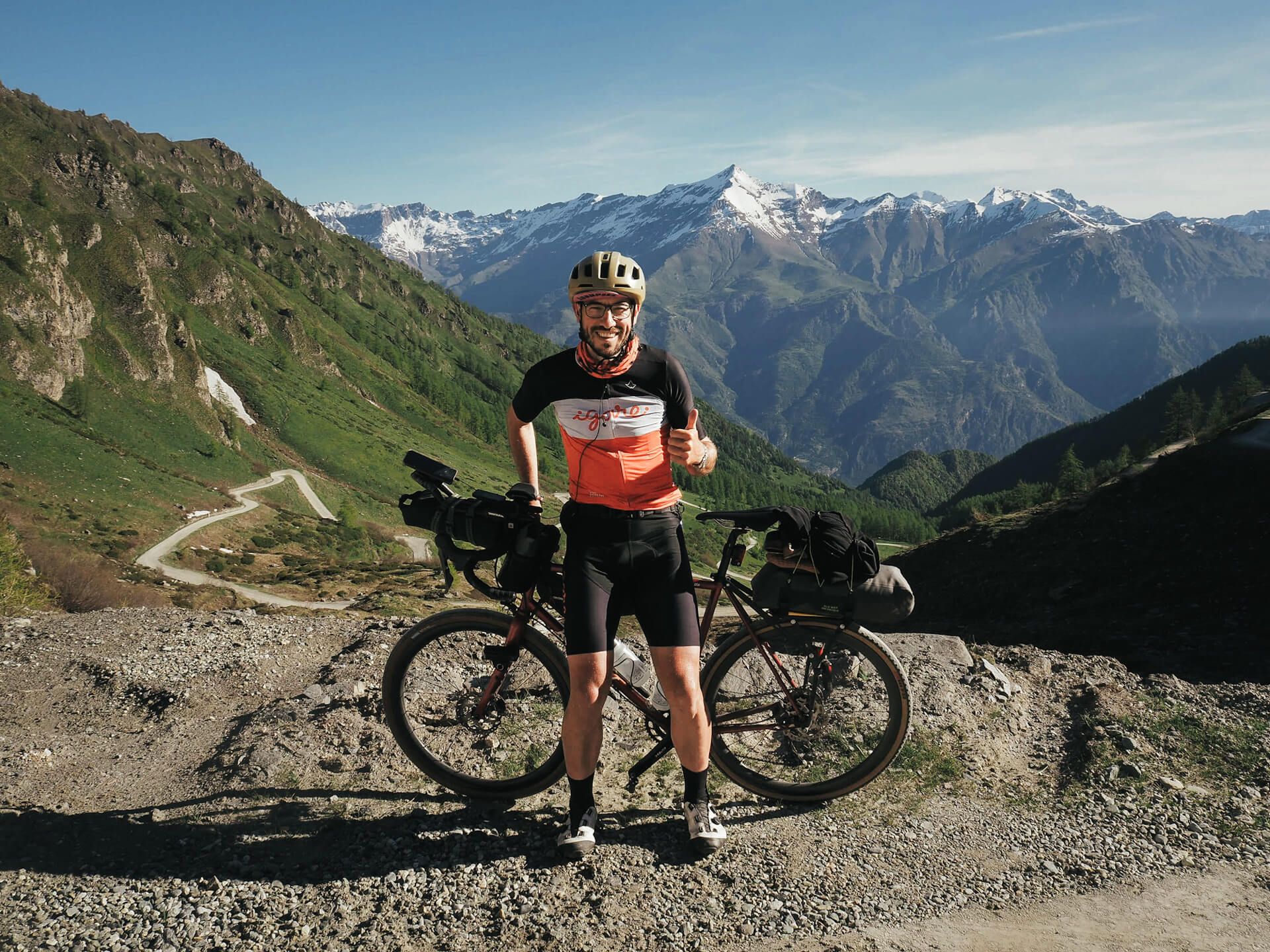
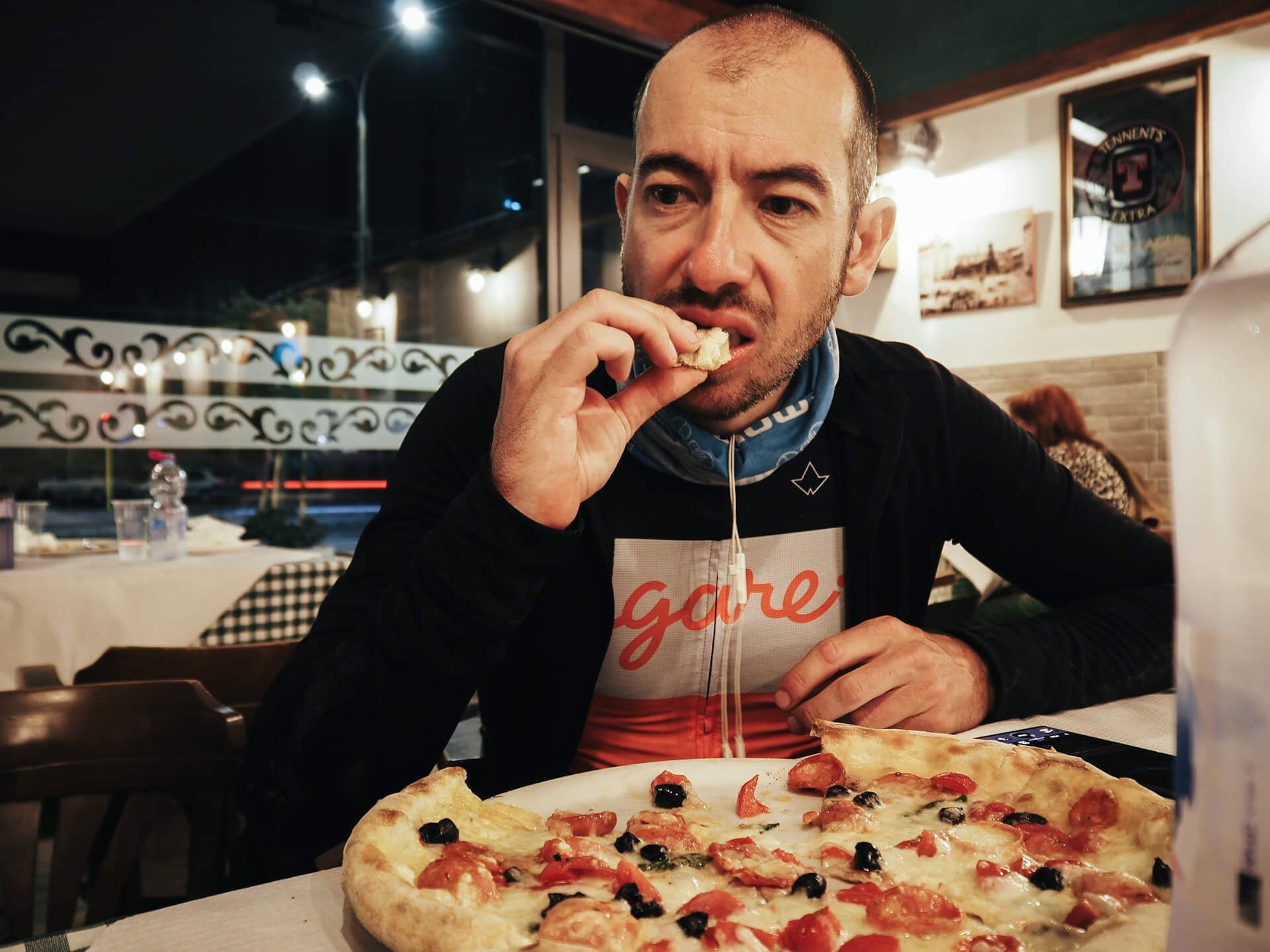
Adrián
Javier’s motive is multi-pronged and starts with a chat about butterfly skin disease (epidermolysis bullosa), a rare genetic disease. The son of Javier’s work colleague was born with butterfly skin nine years ago. Despite its cute name, the disease causes extreme fragility to the skin and leaves it prone to painful blistering and open wounds from friction or trauma to the skin. The boy, Adrián, must be vigilant about caring for his wounds every day so that they don’t get infected and fester. When Adrián was born, Javier was already packing in some epic cycling challenges, now this newborn baby with his rare skin disease gave greater purpose to Javier’s rides.
“You know, it's a rare disease like many others, and they just don't have the space they should have in society,” Javier said. “My point of view was that if you get people to start talking about this disease, it's better to spread awareness to more people and make it more widely known what these people are suffering from.”
So it was late summer of 2024 when Javier conceived a plan to travel back in time to draw attention to butterfly skin disease. Specifically, he planned to return to the early 20th century – when the first editions of the three Grand Tours took place – and recapture the adventurous spirit of cycling from that time. His idea was to emulate those jumbo stages of 300 kilometers (180 miles) or more without assistance. Same now as back then, Javier would have to resolve any issues he encountered along the way while managing his own food and lodging.
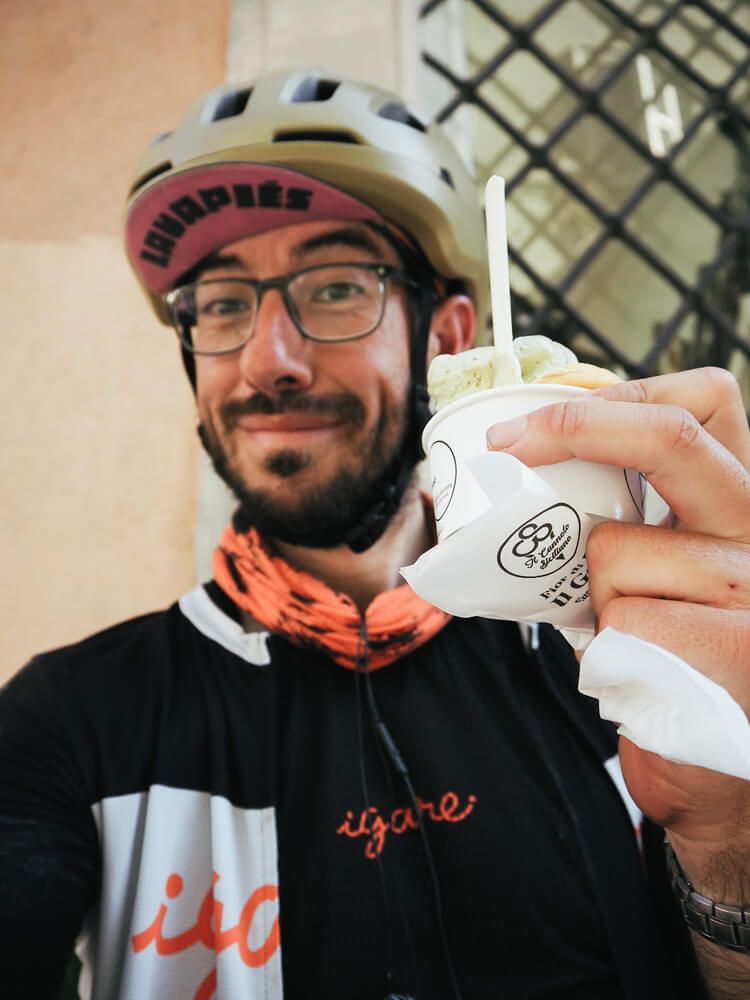
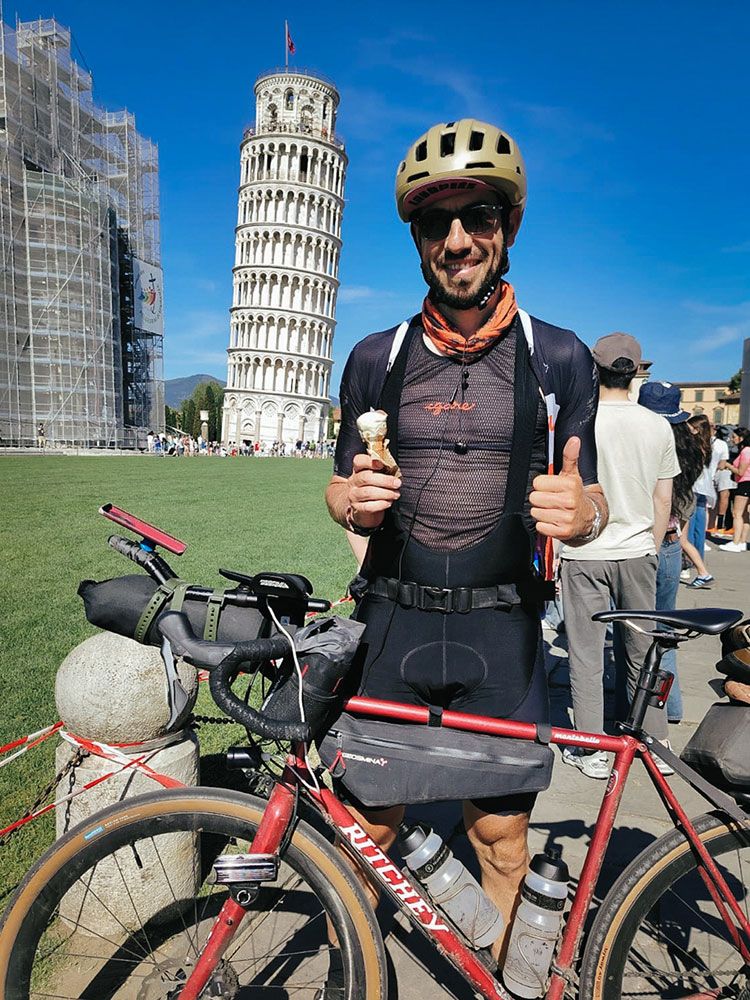
IGARE
He named his ambitious challenge “IGARE,” which means “bicycle” in the Kinyarwanda language of Rwanda, a country he’s had much affection for since his first visit in 2020.
“Just before the pandemic began, I had the opportunity to visit Rwanda—a country where the bicycle is much more than just a means of transport; it is a way of life,” Javier said. “It is used as a taxi, to carry goods, and as the primary mode of transportation. My trip to Rwanda was a life-changing experience, allowing me to meet incredible people with whom I have built lasting friendships. That’s why such a meaningful project deserved a name with a deep significance. “Igare” is a beautiful word that embodies the spirit of this challenge and holds a very special place in my heart.”
“IGARE” is a sports challenge aimed at raising awareness of rare diseases and collecting donations to fund research through using the bicycle as a sustainable means of transportation.
Support the DEBRA Butterfly Skin organization. DEBRA exists as the only support organization to help improve the quality of life for families from birth to end of life care.
Tom Ritchey’s own connection to Rwanda was not lost on Javier. Coffee, that vital component to a cyclist’s daily routine, starts to rot once the fresh cherries are picked, which makes transferring coffee cherries from Rwanda’s high coffee-growing elevations to processing plants lower down a race against time. In the mid-2000’s Tom led a charitable project that promoted the use of bicycles for coffee transportation, which later contributed to the creation of Rwanda’s national cycling team.
The start of the Giro d’Italia — Aurora is lost in transit
Javier arrived in Albania on May 6 at 1:00 a.m. but his Montebello didn’t. As if it were totally normal to lose a bike, the nonplussed airline representative dismissed Javier with some bogus advice and a useless phone number for a call center in the UK (his bike was in Madrid, why would he call the UK?). If it weren’t for a well-placed friend at the Madrid airport, Aurora might still be waiting there in lost-and-found. Three days later, Aurora arrived in Albania in the middle of the night and, with the ghost of Luigi Ganna at his back, Javier officially launched IGARE an hour later under the shroud of darkness.
As romantic as it may sound — to ride the Giro route the same day as the pros, its less enchanting reality is road closures due to the race. Roads are generally closed three hours (or more) prior to when the racers are expected to pass by. Javier had to cover some serious distance to make up for Aurora’s late arrival. So, setting the pace for the next three weeks, Javier and Aurora ticked off 374.31 kilometers (233 miles) in 16 hours and 21 minutes on Day 1.
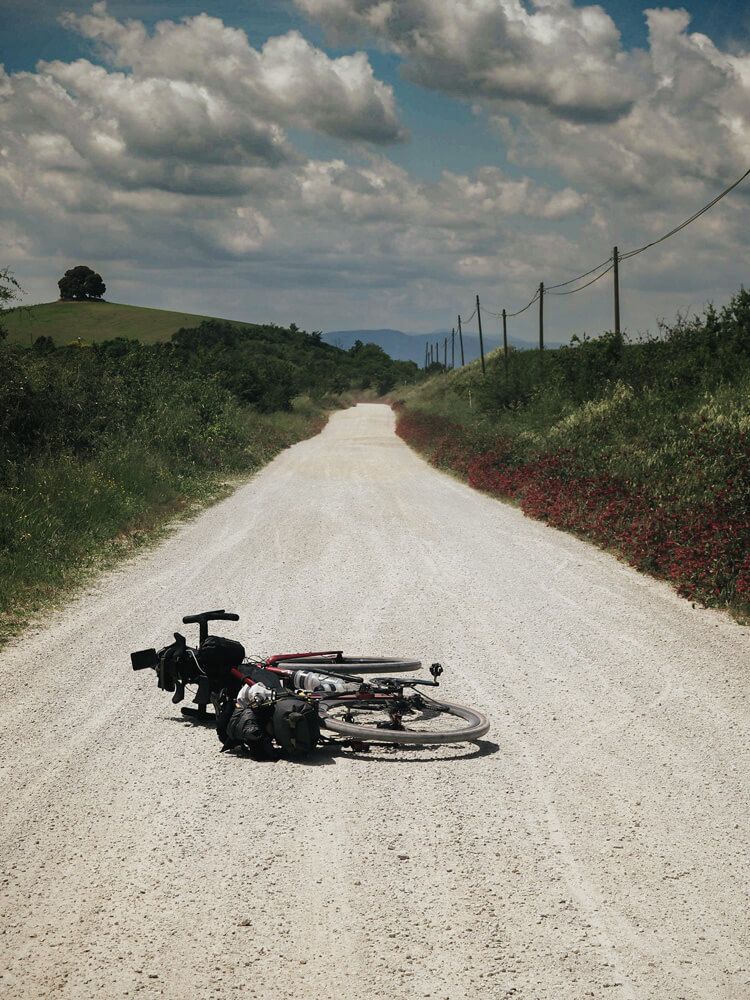
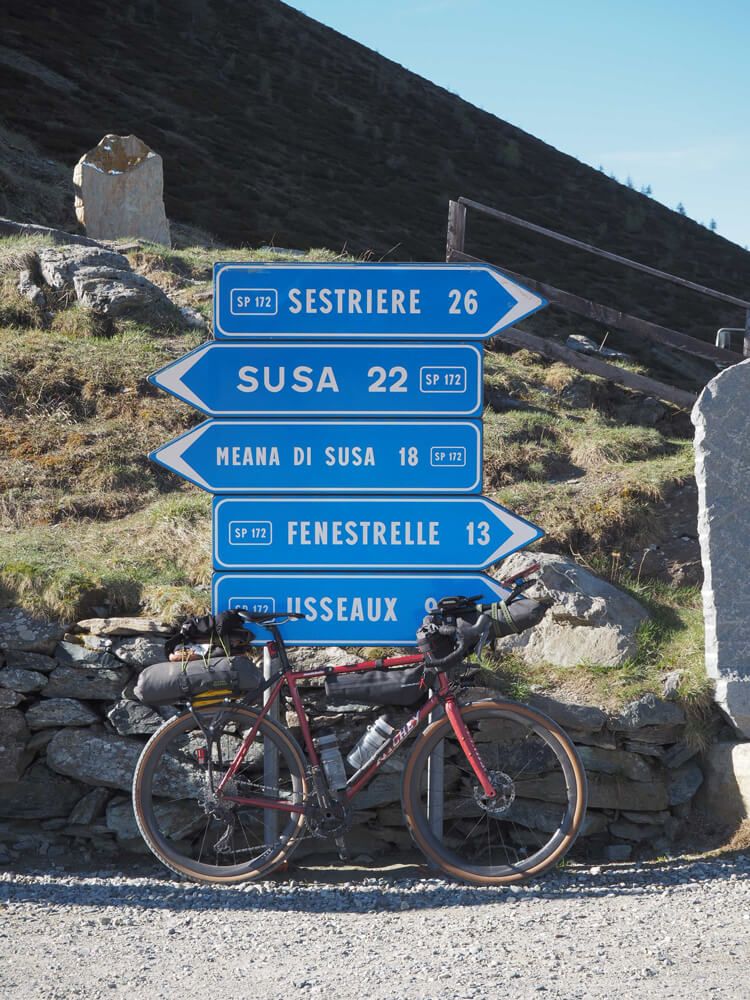
Ride pace
5679.7 kilometers (3529.2 miles)
279 hours 12 minutes
63,443 meters (208,146’)
From May 11 until May 31, he averaged around 275 kilometers (171 miles) per day. Start times ranged from 4:00-6:00 a.m. and ride times lasted on average 12 hours 30 minutes. By Stage 4 he had “caught up” with the racers and tried to open up a gap by leaving shortly before 5:30 a.m. His luck ran out when he encountered road closures before the stage had even started, which brought him to a halt. But then came a group of cyclists that commanded the polizia to let them pass, and the Italian police obliged. Seeing opportunity, Javier quickly seized one of these wheels and found himself riding with the owner of the Israel–Premier Tech team, who was riding with bodyguards and a support vehicle. Javier clung to this group until the road turned upward. Though Javier is a fit and formidable cyclist with a bike that’s totally dialed to his biomechanics, self-sufficiency comes with a weight penalty, and so he dropped off the back and went at his own pace.
Gear
The Montebello was literally made for long-distance, endurance road cycling. The IGARE challenge is turning out to be the ultimate proving ground for the Montebello and so far, Aurora has performed beautifully. In addition to his Montebello, size XL, Javier carefully selected components that would best serve him during IGARE. Here’s what he chose:
- WCS Skyline handlebar: 42 cm
- WCS C220 84D stem: 90mm
- WCS Zeta disc wheelset
- WCS Cabrillo saddle
- SuperLogic Link seatpost: 350mm
- Mini Sliver clip-ons
To complete the setup, Javier handpicked a mix of parts and gear that were up to the challenge as well.
“I installed a Shimano GRX group with a 48-31 crankset and 11-34 cassette,” Javier explained. “On the back I had an Old Man Mountain rack with a 9-liter bag – that's where I carried my sleeping pad, sleeping bag, pillow, toiletries, and a change of clothes for getting out of my cycling gear at night.
Underneath the clip-ons, he put another bag for carrying a second change of clothes, a raincoat, and waterproof pants because it stormed almost every afternoon. Not only did he have to manage what was coming down from above, but also what was coming from within.
“It was a bit of a pain because it was a constant strategy to stay dry. You’d put your clothes on and start to sweat, but then have to take them off when you stopped, otherwise you’d get chilled.”
He kept his tools in a frame bag, along with a tracker so that people could follow his route, and a stove and Aeropress coffee maker, both of which he didn’t end up using. He stashed ride-along food, like dried fruit and nuts and gummi candy in two 1-liter bags on the handlebars, where he could easily access his snacks.
A dynamo hub on the front wheel powered a light with a USB port, which he used to charge his electronic devices during daylight.
If you’re wondering how much his fully loaded bike weighed, Javier could only guess that it weighed around 20 kilograms (44 lbs.). He said he’ll weigh his bike for the Tour de France since people have been asking about its weight.
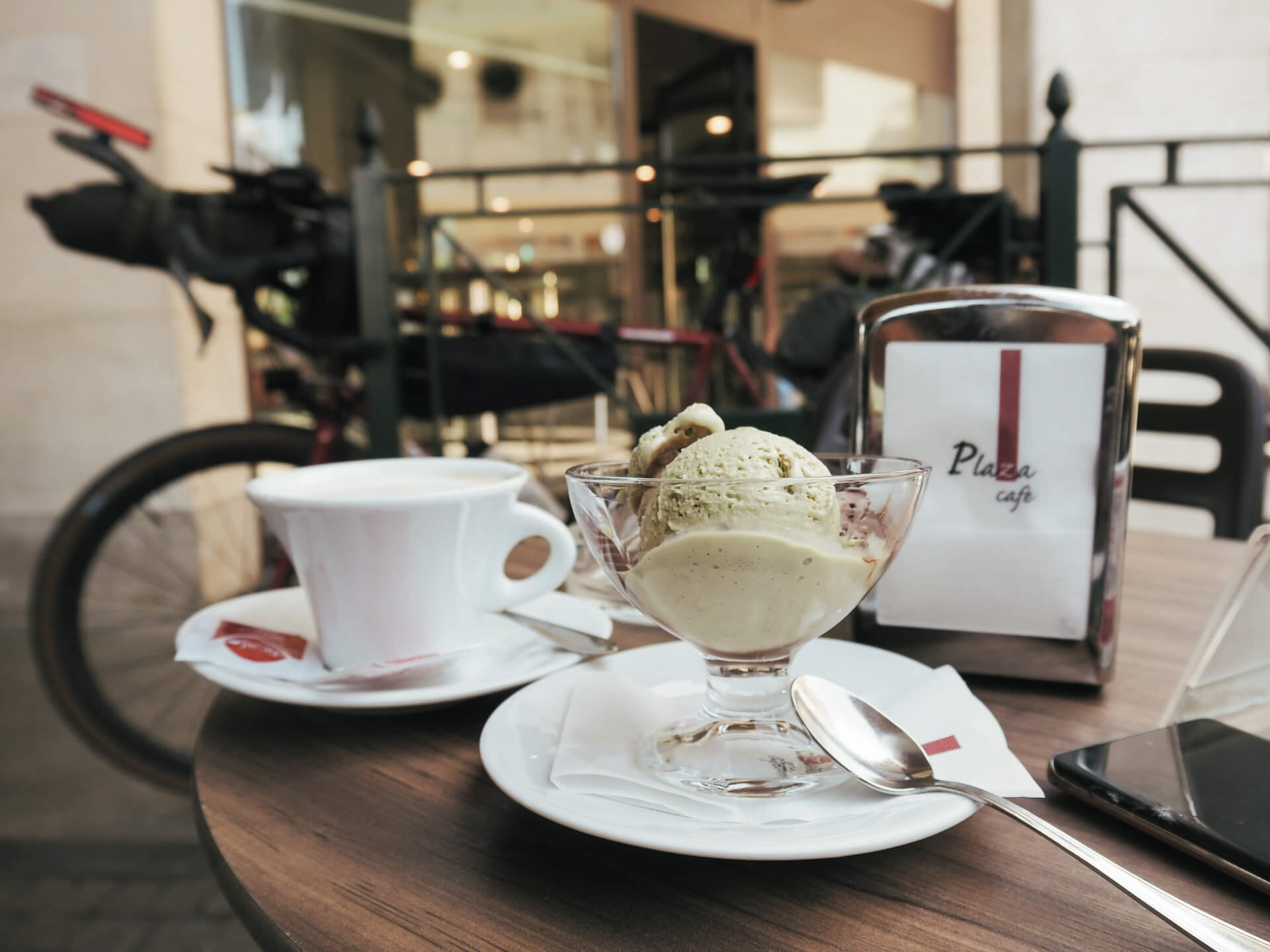
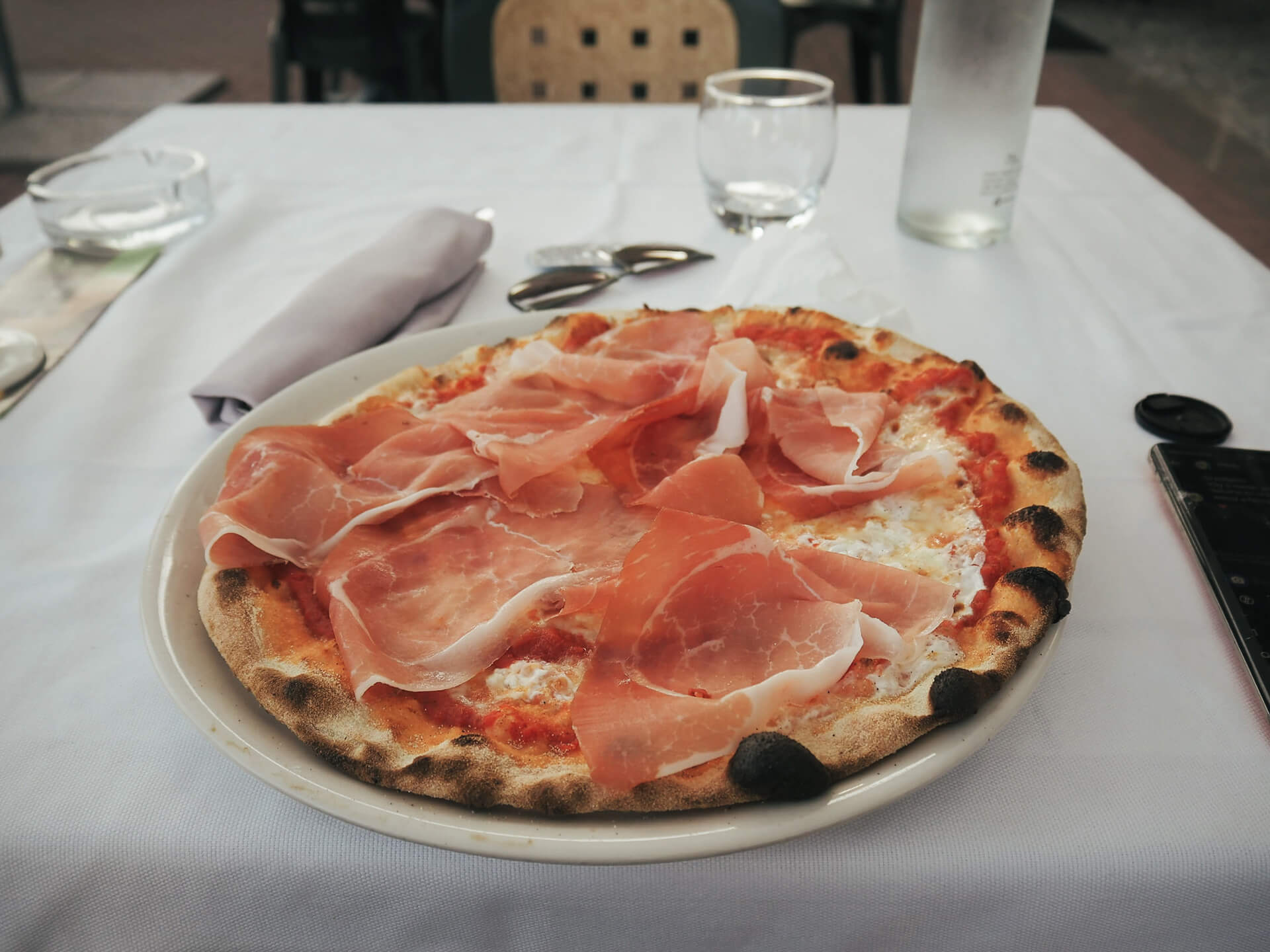
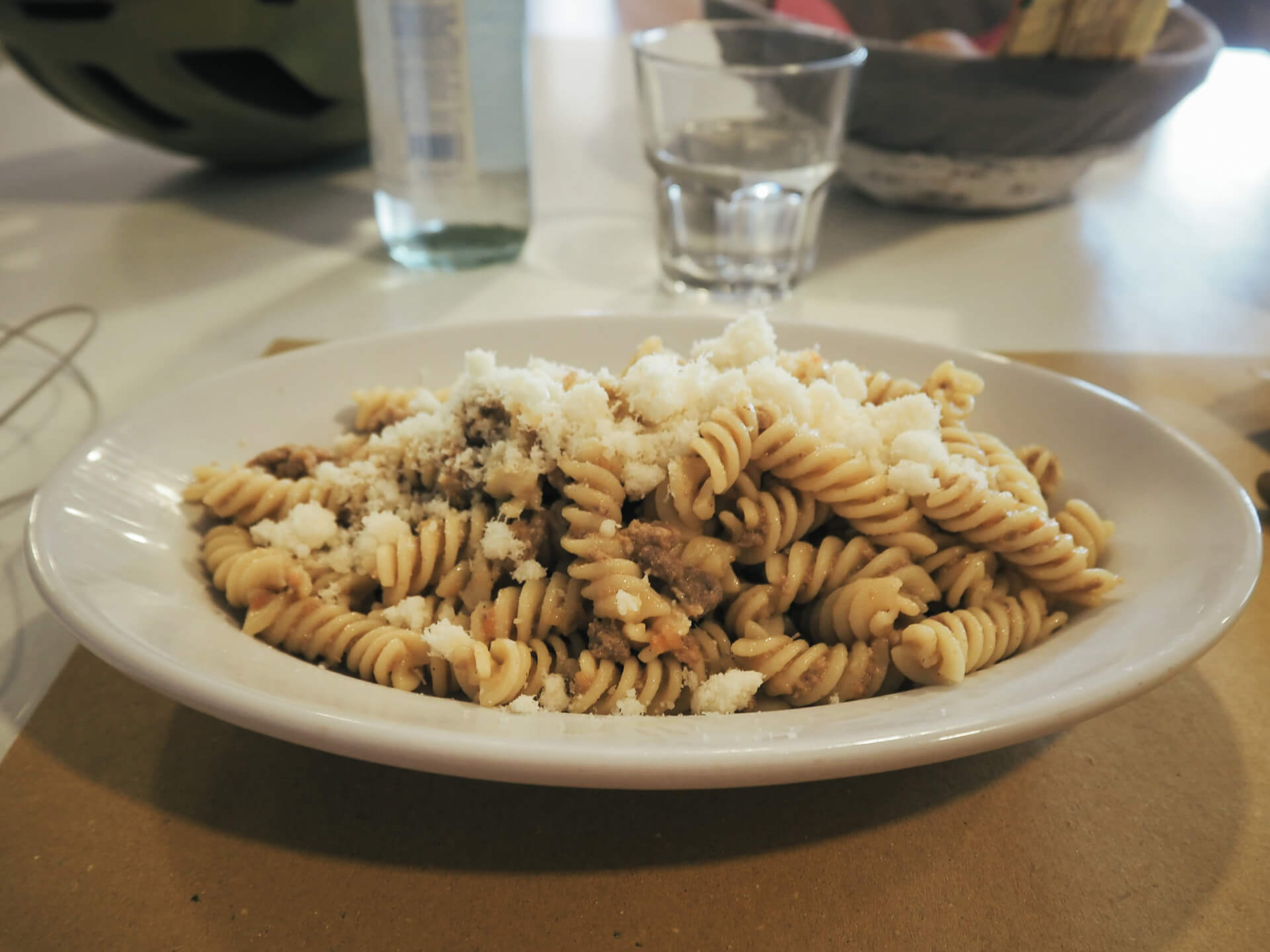
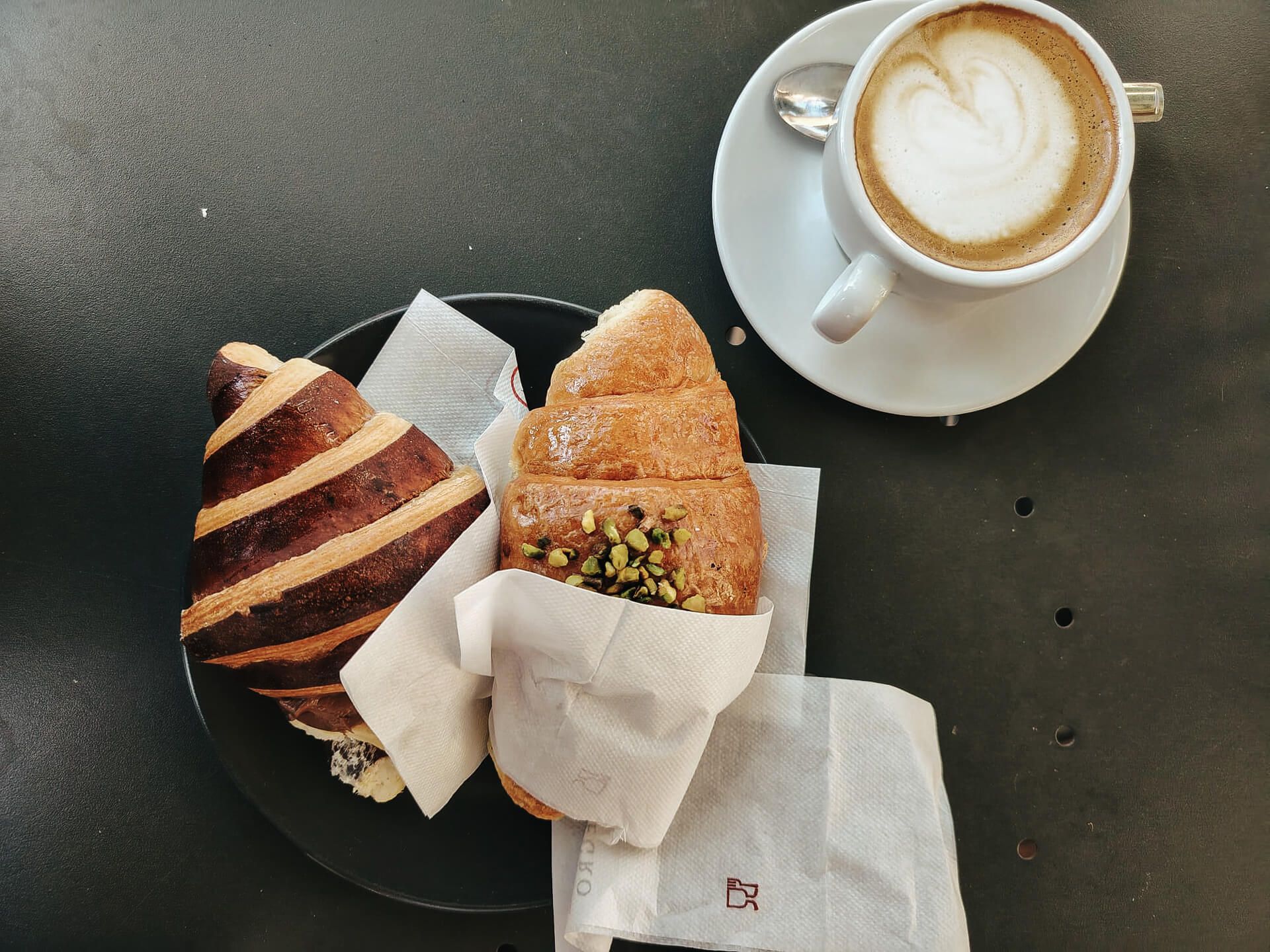
Food
Italy could easily pull rank over France and Spain because the food quality is quite high. Of course the same could be said about France, but Italy seems less concerned about vertical food art, and more intensely focused on turning basic ingredients into home cooked masterpieces. For a cyclist who needs to consume at least 8,000 calories per day, Italy is a perverse romp through gluten, dairy, gianduja, cured meats, cheeses, and coffee — the latter of which Italians don’t f*&k around with.
“Every morning I had two cappuccinos and six brioches, either chocolate, pistachio, or salted caramel — I tried them all,” Javier said. “And then I would stop at noon and have a pizza or a plate of pasta. On days when I was hungrier, I would order a second pizza. Between meals I would stop at the supermarket grab some cookies, gummi candy…sugary things for a boost to make it to the next meal. At night I’d try to find a place for a hot dinner.
I ate — I ate a lot. But even so, I lost weight. I arrived home six kilograms lighter.”
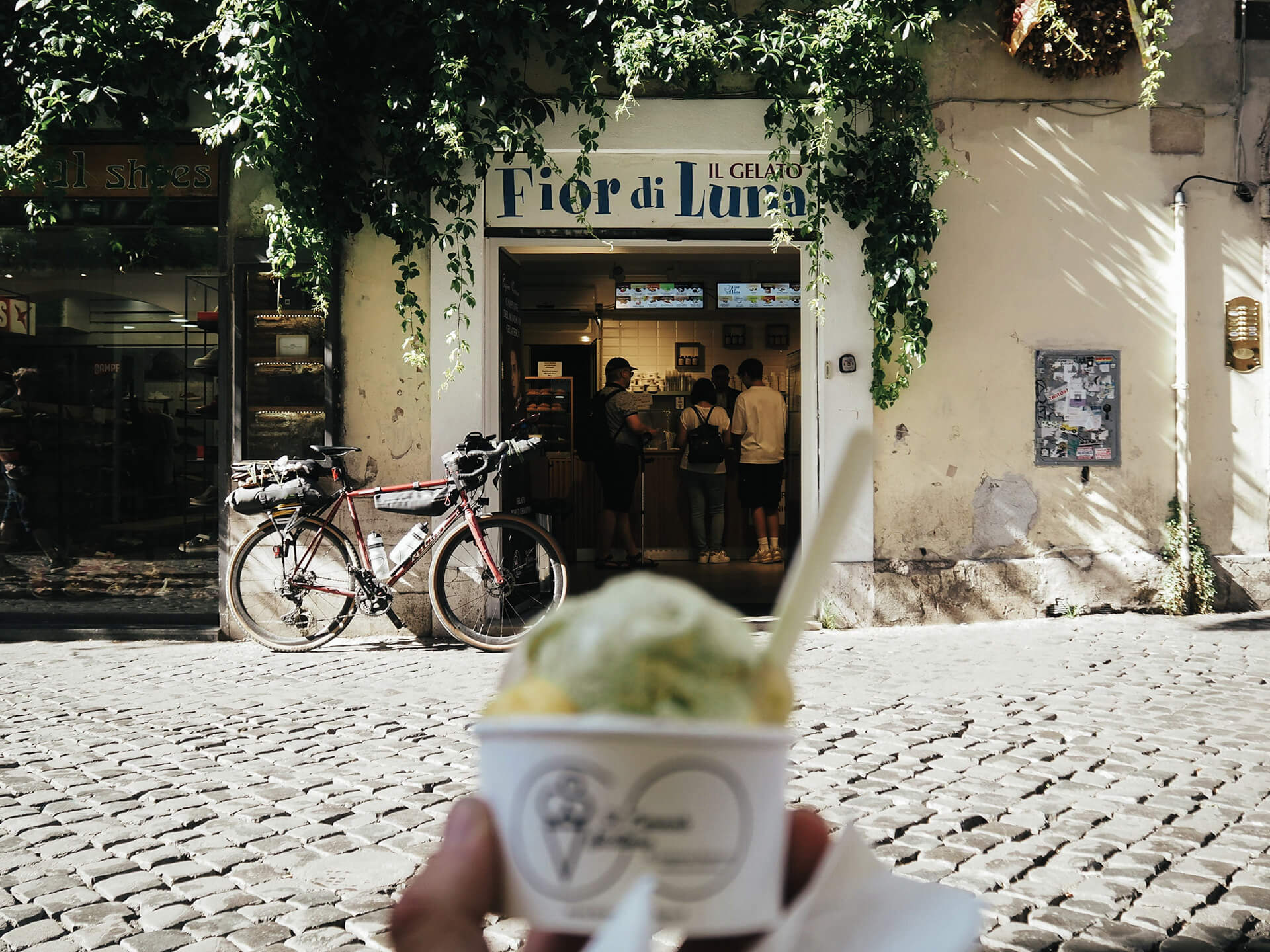
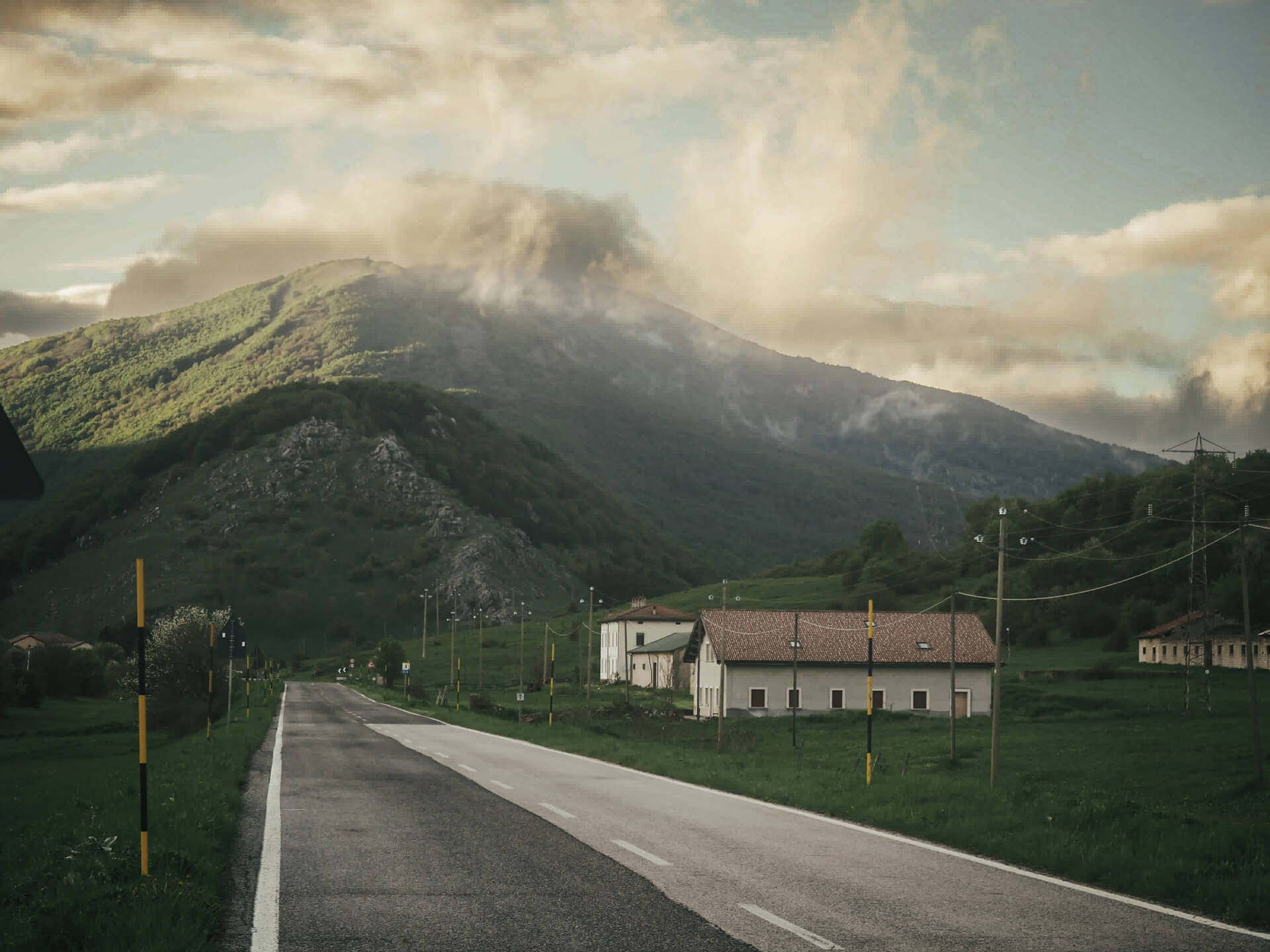
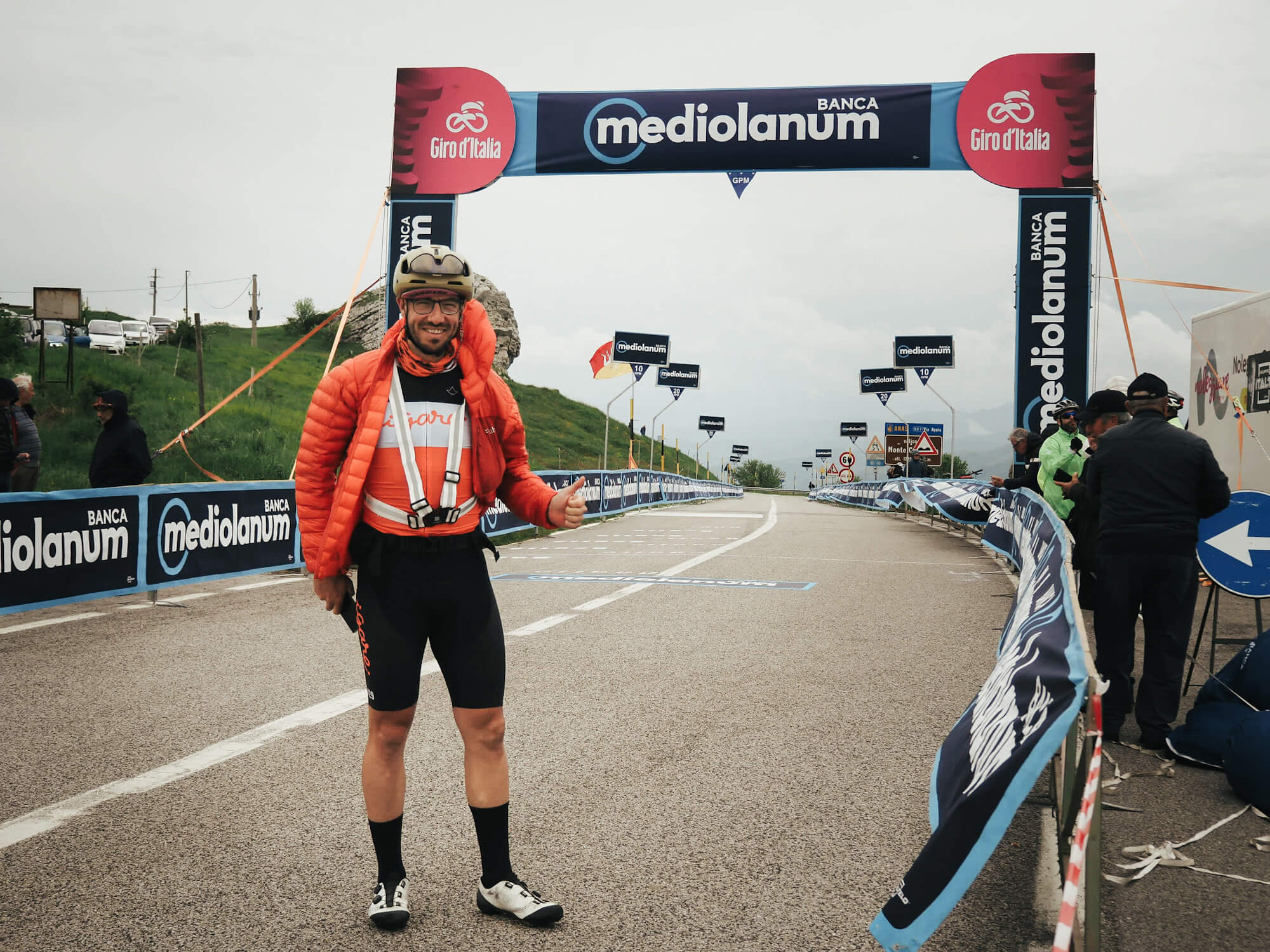
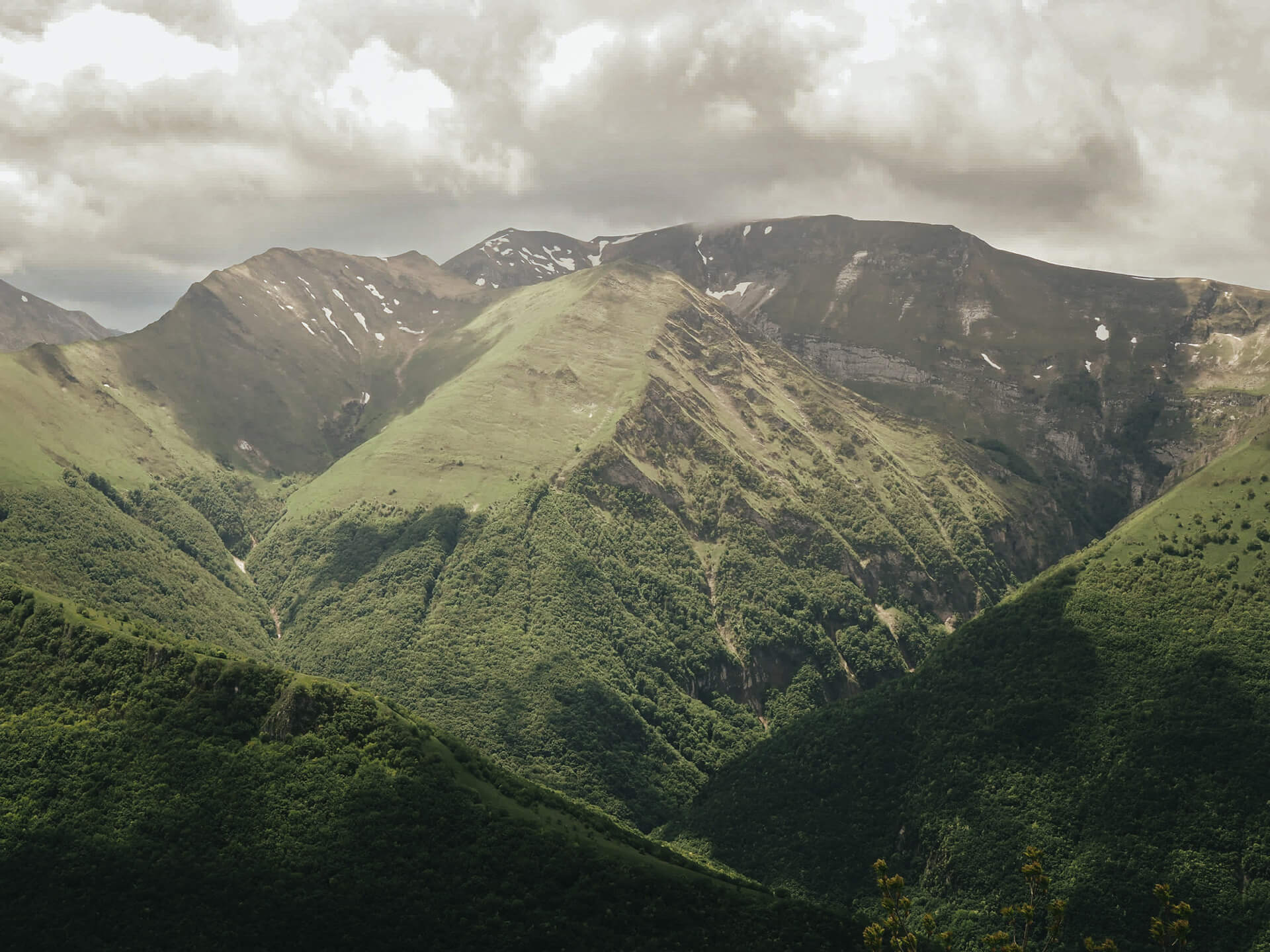
The Tour de France
Before he took off on the second segment of the IGARE challenge, Javier confessed what scares him most about the Tour. It’s not the normal things, like hors catégorie climbs, heat, dogs, the French police etc., but rather French dining hours.
“I've been told that I should stop for dinner by 7:30 p.m. because after that it's hard to find anything open,” he said. “I know that in the morning there's no problem because the bakeries open quite early. But then around 12:00 noon, they stop for lunch, and around 7:00 p.m., for dinner. That's what scares me the most about France, because I think that of the three countries, this one is the hardest.”
Follow Javier here: igare.cc/en/the-challenge/
Related articles
Join now for engaging stories, exclusive offers and product news delivered right to your inbox.


